Tips for Traveling Long Distances in your RV
Any seasoned RVer will probably tell you that it is typically best to avoid long driving days in the RV. They will instead often advise you to break up long drives into smaller chunks and drive a shorter distance each day. However, for most RV owners, there is going to come a time where a long driving day is unavoidable. Perhaps you have a week-long trip planned, and your destination is twelve hours away. Or perhaps you are just in a rush to get where you’re going, whether that be the California coast, the Florida Keys, or home for the holidays. Any of these scenarios could have you driving long distances in your RV in a short period of time.

No matter your reason for planning a long driving day, you can expect this day to be rather tiring. However, there are some tips gathered by those with a few tricks up their sleeve that can certainly make long driving days much easier. To make the experience much more pleasant and doable, consider the following tips the next time you must make it from one place to another in a short period of time.
1. Set realistic goals/expectations
We already established that this guide would help you to travel long distances in a short period of time. However, it is important to still be realistic. Driving twelve hours in a single day can be difficult, but it is not impossible. However, a sixteen or twenty-four hour drive is just not something that you typically can or should attempt in a single stretch. It is often neither smart nor wise. Consider breaking up a drive that is longer than twelve hours into at least two days worth of driving. You’ll be grateful that you did.
2. Look over your route ahead of time
Knowing the approximate route ahead of time scan be helpful for several reasons. Perhaps you will be passing through several big cities, where traffic is expected. Knowing this before you begin your drive is helpful because it will allow you to plan and miss the peak rush hours, instead opting to drive through high-traffic areas at slower times of day. In addition, checking out your route the night before can allow you to plan to briefly stop if there is anything interesting along your route that you or the family would like to see. Short and fun little stops can certainly break up the drive and allow it to be much more pleasant overall.
3. Plan your stops (bathroom breaks, food, dog walks, etc.)
Speaking of stops, long travel days can be much easier when you plan your stops out ahead of time. While not all bathroom breaks are plannable, especially with children, having an idea of where and when to stop for gas and meals can allow for a much more organized travel day. Instead of furiously searching for nearby gas when you are suddenly low, you can plan realistic stops every few hundred miles or so. Likewise, instead of waiting until you are hungry and irritated to remember that you need dinner, you can have your meals planned out as an enjoyable stop along your driving route.
Consider stopping at travel centers, as these can be a great place to use the bathroom (whether in your RV or in the center), grab food or coffee reinforcements, and walk pets as needed. Sometimes even just a quick moment to stretch your legs and allow children a break from being seated can make the day much more manageable.
4. Make a playlist (consider podcasts and audiobooks)
Being bored while driving can make the drive seem so much longer and more tedious. A great playlist, an interesting podcast, or a new audiobook can make the drive more enjoyable for both the driver and the passenger(s). Plan these playlists/podcasts out ahead of time to avoid touching your phone while driving, especially if you are traveling solo. This will make the time go by much faster.
5. Have meals/snacks ready to go
While stopping for meals was mentioned above, one of the best parts of traveling with an RV is that you have access to a refrigerator and a full kitchen. While you cannot safely prepare a meal while driving, you can prepare food ahead of time and grab it from the refrigerator while you are stopped. Likewise, you can keep snacks and drinks on hand in the cab to avoid having to stop every time you or the family are hungry. This can often be more convenient, healthy, and budget-friendly than relying on takeout and travel center food.
6. Bring games/books/toys for kids
Long travel days can be difficult for children, and this can lead to overall frustration for all parties involved. Plan a variety of activities for children to enjoy during a long drive. These exact activities will depend on the child and their preferences, but games, books, toys, and handheld video game devices are popular options for entertaining children in the car. Likewise, remember to pack plenty of snacks and a few blankets or pillows for kids who may want to take a nap.
7. Switch off drivers as needed
As frequently mentioned, driving long stretches can be monotonous and tiring. Having a second capable driver to switch off with during the drive can be so helpful. Suddenly an eight or twelve-hour long drive is cut in half, with the option to spontaneously trade places whenever the main driver needs a break. In addition, this will allow the driver(s) to rest both mentally and physically between long, continuous bursts of driving, allowing you to arrive quicker and more safely than if one person did all of the driving.
8. Take breaks when needed
This is especially important for those who are traveling solo, but it can be equally important for anyone driving long distances. Breaks are essential to ensure that you arrive quickly and safely. They are also helpful for your overall sanity, as very few people can travel as quickly as possible without an occasional stroll or some fresh air. This will also allow the overall experience to be much more enjoyable.
9. Relax when you arrive!
Finally, when you arrive at your destination, take a few minutes to relax before fully setting up the rig and the campsite. Or quickly set up the site and have a celebratory beer or snack when you have finally made it. If your final destination is a Harvest Hosts location, perhaps your celebration will become a well-deserved wine or beer tasting, or even an excellent meal. Either way, be sure to do something that you enjoy, as this can be an excellent way to wind down after travelling long distances.
Long travel days can be both tiring and stressful. However, with the right planning and tips, they can be so much more enjoyable and successful for all parties involved. Most people do not tend to enjoy being cooped up in a vehicle or small space for long periods of time, but these tips can make the experience of driving long distances much more pleasant. Be sure to consider these next time you must make a long drive over a short period of time.
Do you often drive long distances at a time? Do you follow any of these tips to make it easier on yourself? Are there any additional helpful tips you would offer to those driving long distances? What has worked for you in the past? Feel free to share and discuss in the comments below!
60 Iconic and Classic Cars
Photo credit: Wikipedia
1935 Duesenberg SJ LA Phaeton
Duesenberg was a luxury automobile company based in Auburn, Indiana, that was active from 1913 to 1937. Introduced in 1932, the supercharged Model J of their popular roadsters could achieve speeds of over 135 miles per hour. The car's speed potential gave it legendary status in its time, and it is now looked upon as an automotive technological marvel.
Photo credit: storem Ferrari Enzo The Ferrari Enzo, or the Enzo Ferrari, is a 12 cylinder mid-engine berlinetta named after the company's founder. Built in 2002 using Formula One technology, the Ferrari Enzo is one of the most powerful naturally aspirated production cars. The car achieved third place on Sports Car International magazine's "Top Sports Cars of the 2000s."
Photo credit: Monica's Dad Toyota XB Scion The Scion xB is a vehicle manufactured by Toyota specifically for its United States market and sold under its Scion brand, which is targeted toward younger drivers. The box-shaped five-door compact station wagon is geared for Generation Y drivers, those born between 1980 and 1994, because of the fact that there are 78 million of these on the roads or about to be on the road. Toyota also develops a Scion xA, which was expected to outsell the xB, but the xB has managed to outperform its older brother.
Photo credit: buildscharacter Aston Martin DB9 The Aston Martin D89 is a grand tourer that was released by Aston Martin in 2004. It was the first new car to be built at the company's Gaydon facility, its name stemming from the initials of David Brown, an owner of Aston Martin for a significant period of time. The car has been especially well-received among car enthusiasts.
Photo credit: pdbreen Shelby Cobra The AC Cobra was a British sports car that was designed and built in the 1960s. American auto racer Carroll Shelby wrote a letter AC Cars and requested a car modified to accept an V8 engine, a move that set the way for the AC Shelby Cobra. Eventually, the Shelby Cobra would become a successful car in many racing circuits, even though it was not meant to race.
Photo credit: exfordy Lamborghini Countach The Lamborghini Countach was a mid-engine sports car produced by the iconic Italian automaker Lamborghini from 1974 to 1989. Its famous wedge-shaped, angular design became immediately popular and would be featured by many other popular sports cars for the decades to follow its introduction. The Countach is considered by many car enthusiasts to be among the finest sports cars in history.
Photo credit: CoreForce Dodge Viper The Dodge Viper is a V10-powered sports car manufactured by the Dodge division of Chrysler LLC. Production of the Dodge Viper began in 1992 and since then it has become iconic of Dodge and of luxury sports cars in general. The Dodge Viper's minimalist style, high performance, powerful engine, and strong styling have all made it an enduring classic among car enthusiasts.
Photo credit: TravOC Hummer H1 The Hummer H1 is the civilian adaptation of the High Mobility Multipurpose Wheeled Vehicle (HMMWV for short), created by AM General. Produced from 1992 to 2006, the Hummer H1 was the first in what would become the Hummer line. The most sought-after version of the Hummer H1 for collectors is the H1 Alpha, which was unveiled in 2006 and featured the best gas mileage and the most powerful engine of all the previous models.
Photo credit: sludgegulper Reliant Robin The Reliant Robin is a small three-wheeled car that is manufactured by the Reliant Motor Company of Tamworth, England. As it is a three-wheeled car with an official weight of less than a ton, the car can be driven in the UK with the equivalent to a class M license, a motorcycle license. This gives it considerable savings potential over a normal-sized car because of the taxing conventions in many countries.
Photo credit: wikipedia Loremo LS Loremo is a German automaker corporation that was founded in 2000, focused on designing and manufacturing cars with a low weight and little air resistance. The Loremo LS the base model of the turbodiesel, high-efficiency car that Loremo plans to introduce, compared to the sportier Loremo GT. According to the company, the Loremo LS will only produce 50 grams of carbon dioxide per kilometer.
Photo credit: cliff1066â„¢ 1968-1969 Dodge Charger The Dodge Charger is a car manufactured by Chrysler under the Dodge brand name. Although there have been many different types of Dodge Chargers, the B-body Dodge Charger was the one that existed throughout the late 60s and most of the 70s. Based on the Chrysler B platform, the Dodge Charger could be ordered with high-performance options. The 1969 Dodge Charger "General Lee" was featured in the popular 80s TV series "The Dukes of Hazzard."
Photo credit: Simon Davison Rolls Royce Phantom The Rolls Royce Phantom was the auto maker's replacement for the original Silver Ghost. Constructed in both the United States and the United Kingdom, with time differences between the two, the Rolls-Royce Phantom featured a much-improved engine over the original Silver Ghost. For its time, the Rolls-Royce phantom featured state-of-the-art technology and variety of then-jaw-dropping features.
Photo credit: cstreet.us Studebaker Commander The Studebaker Commander is the model name of a long line of vehicles produced by South Bend, Indiana's Studebaker Corporation from 1927 to 1964. The first Commander was world-renowned because of its strength and toughness even in the worst of conditions. The Commander name was briefly dropped by the company in the 1930s but was reinstated again later in the same decade, only to be dropped again about thirty years later.
Photo credit: Michi1308
Photo credit: chad davis
1959 Cadillac Eldorado The Cadillac Eldorado was part of the Cadillac line from 1953 to 2002, the longest-running American personal luxury car and the only one sold after the 1999 model year. While bodystyles and mechanical layouts varied dramatically throughout the history of the Eldorado, the car was always near the top of the Cadillac line. The Eldorado's long and extensive history have made it one of the true legends of the sports car world. A Cadillac Eldorado ambulance was featured in the Ghostbusters movie.
Photo credit: CarSpotter Porsche 911 The Porsche 911 is a sportscar made by Porsche AG of Germany and it features one of the most famous and durable designs in auto history. Introduced in 1963, the car has undergone continuous development but has maintained the same basic design concept throughout its evolution. Both private teams and the factory itself have managed to modify the Porsche 911 for a variety of auto-related purposes, such as racing and rallying.
Photo credit: Simon Davison Shelby Mustang Cobra The Shelby Mustang Cobra is a high performance variant of the Ford Mustang that was built from 1968 to 1970. The car was originally meant to compete with the Corvette, a series modified by American racer Carroll Shelby's company and given a special designation. Both cars, however, were notable because of the fact that they were more expensive to build than buyers were charged to purchase the vehicles.
Photo credit: Wikipedia 1978 Pontiac Firebird Trans Am The Pontiac Firebird is a car built by the Pontiac division of General Motors and produced from 1967 to 2002. Powered by V8 engines of a variety of GM divisions, Firebirds are primarily known for their characteristic "Coke bottle" stylings, and for the fact that they were not originally meant to be one of GM's top sellers. The Pontiac Firebird will not return for a fifth-generation despite the fact that GM has revived the Chevrolet Camaro.
Photo credit: dave_7 Delorean DMC 12 The DeLorean DMC-12 is a sports car that was manufactured in Northern Ireland to be sold in America from 1981 to 1982. The car is most commonly referred to as the DeLorean, as it was the only model ever produced by the company. The first prototype appeared in 1976 and 9,000 DeLoreans were produced by 1982, when production stopped. Today, only about 6,500 of these cars are believed to exist. This car is most well known for being used a time machine in the Back to the Future movies.
Photo credit: omniNate 1932 Ford Roadster The Ford Model B was a new Ford automobile that began production in 1932, a much-upgraded version of the Model A and the precursor to 1935's Model 48. The Model Bs came in two versions: one with a four-cylinder engine and one with a V8 flathead. The latter version of the car had the distinction of being the first commercially successful example of a car featuring a V8 engine.
Photo credit: dok1 1955 Chevy Bel Air The Chevrolet Bel Air is a full-size car produced by the Chevrolet division of General Motors from 1950 to 1975. When the first Chevy Bel Airs were introduced in the 1950s, their styles were intentionally revolutionary and would establish many design conventions that were followed for several decades to come. The 1955 Chevy Bel Air is notable because it gained a V8 engine option, one that performed so well that remained in production for decades.
Photo credit: cliff1066 Ford GT40 The Ford GT40 was a high performance sports car that managed to win the 24 hours of Le Mans four times in a row, from 1966 to 1969. The car was originally built to win long-distance sports car races against Ferarri, the previous winner of the five Le Mans before the GT40's winning streak. The car sprang from Henry Ford II's long-standing desire to have a Ford sports car at Le Mans, a wish that was granted by the Ford GT40.
Photo credit: fogcat5 Tesla Tesla Motors is a Silicon Valley startup automaker that focuses on developing and manufacturing electric vehicles and is currently the only automaker building and selling highway-capable electric vehicles. The Tesla Roaster is Tesla's first production vehicle, an all-electric sports car with an average powering cost of $0.02 per mile. General production of the vehicle began in 2008.
Photo credit: Belgapixel's 1937 Packard The 1937 Packard marked the presence of the first six-cylinder engine in what was, at the time, the premier luxury automobile. The introduction of the six-cylinder engine turned out to be an example of perfect timing, because of the 1938 recession. The car continued to be popular during World War II, despite the fact that Packard started to focus on producing airplane engines.
Photo credit: Alan_D Mercedes Benz 300sl The Mercedes-Benz 300SL was introduced in 1954 as a two-seat, closed sports car with the distinctive gull-wing doors, but it was later offered as an open roaster. The 300SL was the fastest production car of its day, making it very popular among contemporary speed demons. The car was based, albeit somewhat loosely, on Mercedes-Benz's highly successful competition-only car of 1952.
Photo credit: underwhelmer Jaguar xk120 The Jaguar XK120 is a sportscar that was manufactured by Jaguar from 1948 to 1954. It was the company's first postwar car, succeeding the SS 100 which halted production in 1940. Available in two convertible versions, the Jaguar XK120 was also very successful as a racecar and managed to set various world records in a span of three years.
Photo credit: Beige Alert Toyota Prius The Toyota Prius is a full hybrid-electric mid-size car developed and manufactured by Toyota Motor Corporation. The car has been around since 1997, when it became available in Japan, which makes it the first mass-produced hybrid vehicle. The Prius was released worldwide in 2001, and it is now sold in more than 40 countries and regions worldwide, especially popular because of its enormous fuel efficiency.
Photo credit: The Wong Family Pictures Mini Cooper The Mini Cooper is a small car produced by the British Motor Corporation and its successors from 1959 to 2000. The original version of the Mini Cooper is considered to be iconic of the 1960s, with its easily-recognizable design often said to have influenced an entire generation of automakers. It is also considered to be, in many ways, the British equivalent to the German Volkswagen Beetle, which was also very popular in the United States.
Photo credit: aresauburnâ„¢ El Camino The Chevrolet El Camino is a coupe utility vehicle produced by the Chevrolet division of General Motors from 1959 to 1960, and then again from 1964 to 1987, originally manufactured in response to the success of the Ford Ranchero. In North America, the vehicle is classified as a truck, despite the fact that it wsa based on corresponding Chevrolet car lines. It has been rumored that GM may still bring back the El Camino.
Photo credit: wikipedia Stout Scarab The Stout Scarab was an automobile produced in small numbers by the Stout Engineering Laboratories of Detroit, Michigan, throughout the 1930s. In addition to many other technological and engineering distinctions, the Stout Scarab is considered to be the very first production minivan in the world. During its time, the Stout Scarab was dramatically different from any other car on the market and featured the most spacious interior of any American vehicle.
Photo credit: | El Caganer
Photo credit: | El Caganer Pierce Silver Arrow The Pierce Silver Arrow was a concept car designed by James R. Hughes, of which five were produced in three months, a record speed. The car was then introduced at the 1933 New York Auto Show, causing a massive sensation due to its futuristic design, spare wheels hidden behind the front wheels, and a top speed of 115 mph. Only three Silver Arrows exist today.
Photo credit: mashleymorgan 1969 Chevelle The Chevrolet Chevelle was a mid-sized car that debuted in 1964 and was in production from then until 1977. The Chevelle was one of General Motors' most successful cars, with models ranging from family cars to coupes and convertibles. In 1969, SuperSport became a performance option for buyers of the Chevrolet Chevelle.
Photo credit: rutlo Mazda Miata The Mazda MX-5, which is also known as the Mazda Miata in North America and the Mazda Roadster in Japan, is a two-seater roadster sports car built by Mazda in Hiroshima, Japan. The car was introduced in 1989 and it is now in its third generation. Already, it has won over 150 auto awards because of its solid, impressive design and its various outstanding features. More than 740,000 Miatas have been sold worldwide.
Photo credit: kidperez Audi TT The Audi TT is a sports car manufactured by German automaker Audi AG since 1998. Now in its second generation, the Audi TT is available either as a 2 x 2 coupe or as a two-seater roadster. The car was originally shown as a concept car at the 1995 Frankfurt Motor Show and his since become a popular vehicle throughout Europe and the United States.
Photo credit: London Flash Cars Bentley Continental The Bentley Continental is a two-door "two plus two" grand touring coupe released in 2003, which replaced the previous Rolls-Royce-based Continental R and T. The car is reportedly able to go from 0 to 60 mph in about 4.7 seconds and can eventually reach a top speed of 197.6 mph, with the Bentley Continental GT Speed setting the World Speed Record on Ice. A new model, the Bentley Continental Supersports, is set to be in retail by the summer of 2010.
Photo credit: wikipedia
Ferrari 288 The Ferrari 288 GTO is an exotic homologotation, from which the "O" in the name comes from, of the Ferrari 308 GTB produced from 1984 to 1986. The car was built to compete in the new Group B Race series with a minimum of 200 cars required for homologation. However, there were not enough entrants for the Group B series, leaving only the Group B Rally championship. This means that all 272 Ferrari 288 GTOs are road cars exclusively.
Photo credit: wikipedia Minivan The Dodge Caravan is a minivan manufactured by Chrysler under the Dodge brand, along with its rebranded Plymouth Voyager. Both were introduced in 1983 and have become successful worldwide, with the Chrysler minivans having been named as the 13th best selling automotive nameplate worldwide. There are over 12 million minivans on the road today, cars praised for their storage capacity and friendliness towards larger families.
Photo credit: stephenhanafin Mercedes McLaren SLR The Mercedes McLaren SLR is a supercar that was jointly developed by Mercedes-Benz and McLaren Automotive. The car features an automatic gear box, a front mid-engined arrangement, and certain driving characteristics, leading to a GT classification for the car. This means that some of its rival vehicles include the Aston Martin DBS V12 and the Ferrari 599 GTB Fiorano. The SLR was dropped due to lack of sales in 2007.
Photo credit: storem Maserati Quattroporte The Maserati Quattroporte is a luxury four-door saloon made by Italian automaker Maserati, whose name translated from Italian literally means "four doors." There have been five generations of the Maserati Quattroporte, each separated by about five years. The car first came on the scene in 1963, at a time when the company's reputation was at its peak.
Photo credit: J.Smith831 Bugatti Veyron The Bugatti Veyron is a mid-engine grand tourer developed by the German automaker Volkswagen and produced by the Volkswagen brand Bugatti Automobiles SAS. The car is named after French racing driver Pierre Veyron, winner of the 24 hours of Le Mans in 1939 while racing for the original Bugatti company. About two hundred of these cars have been built and delivered through when production ceased in late 2008.
Photo credit: Hugo90 Station Wagon Station wagons are passenger automobiles with a body style similar to a sedan but with a roofline that extends over the whole cargo area, ending with a door that is more vertical than a typical hatchback. The term is used in America, Australia, Canada, and New Zealand, while the term "estate car" is used in British English. European automakers also use specific model names to distinguish their station wagons from their sedan counterparts. Throughout the 70s and 80s, station wagons were popular for families driving across the country on vacation.
Photo credit: Dmentd
Woodie "Woodie" is a term used to describe a specific style of car, generally to describe station wagons where the rear portion of the car's bodywork is made of wood. This wood is most often visible, covered with a clear finish over either the entire area or just on the wooden framework. The majority of woodies were produced before the 1950s, before safety regulations began to catch up to the idea that wood frames may not be as safe as steel frames.
Photo credit: JLaw45 PT Cruiser The Chrysler PT Cruiser was launched by Chrylser as throwback to the retro-styled station wagon in 2000 and then was relaunched as a convertible in 2005. The PT Cruiser was first conceived as a model of the Plymouth, thus receiving the Chrysler nameplate due to the 2001 discontinuation of the Plymouth brand. The convertible was discontinued in 2007, while the PT Cruiser brand was also discontinued at the beginning of 2009.
Photo credit: mashleymorgan
SUV SUVs, or sport utility vehicles, is a general term for a vehicle that is similar to a station wagon but built on the chassis of a light truck. SUVs are generally also equipped with off-road capacities, the towing abilities of a pickup truck, and/or the passenger capacity of a minivan. SUVs are considered light trucks and are regulated less strictly by American laws and by many other laws around the world. In recent years, almost every auto manufacturer has created a SUV, as these vehicles have risen in popularity among US families.
Photo credit: mashleymorgan Jeep CJ The Jeep CJ is the civilian version of the military vehicle that was used primarily during World War II. The first CJ prototype, the CJ-2, was introduced in 1944 by Willys and the same basic vehicle stayed in production until 1986. The Jeep CJ is notable for its extreme and enduring popularity throughout much of its production run, popularizing the idea of an offroad vehicle for consumer use.
Photo credit: Ed Callow [ torquespeak ] Jaguar S-3 The Jaguar S-Type was produced from 1963-1968, a more sophisticated and advanced version of the Jaguar Mark 2. Sold alongside the Mark 2, the S-Type was a major redevelopment of the vehicle, replacing the Mark 2's rear bodywork and adding a variety of interior and stylistic changes. Despite the age and relative poor technology of the Mark 2, it continued to sell well long into the Jaguar S-Type's production run.
Photo credit: dave_7
Lotus Esprit The Lotus Esprit was a sportscar built by British automaker Lotus from 1976 to 2004. The design that eventually led to the Esprit was unveiled in 1972 at the Turin Motor Show. This car was the first to use designer Giorgetto Giugiaro's "folded paper" designs, and a new Esprit is rumored to be under development.
Photo credit: Ed Callow [ torquespeak ] Porsche 928 The Porsche 928 is a grand tourer automobile sold by Porsche AG of Germany from the model years of 1978 to 1995, throughout which times it was one of Porsche's most exclusive and expensive vehicles. In 1983, the Porsche 928S was the fastest car sold in North America, capable of reaching a top speed of 146 mph. Rumors have spread through the world of car enthusiasts that Porsche may be ready to breathe new life into the Porsche 928 model with a design that has been set aside but not forgotten.
Photo credit: Custom_Cab 1957 Ford Thunderbird The Thunderbird is an automobile manufactured by the Ford Motor Company in the United States over thirteen model generations, a production run that lasted 50 years from 1955 to 2005. Its introduction to the market created the niche that is now referred to as the Personal Luxury Car. The car is named after a mythological creature known by many Native Americans.
Photo credit: Coradia1000
Ford Edsel The Ford Edsel has the ignominious distinction of being one of the biggest commercial failures in the history of American business. The car was born after Ford's transition to publicly traded company, because of the fact that cars were not all designed by the Ford family themselves. Despite the car's flashy advertisements and huge amounts of publicity upon its release, the Ford Edsel's clunky design and poor features were enough to limit sales dramatically.
Photo credit: oval_BURNS Tata Nano The Tata Nano is a rear-engined, four-passenger city car built by Tata Motors, primarily aimed toward success in the Indian market. The car is praised for its fuel efficiency, achieving around 61 miles per gallon on the highway and about 52 miles per gallon in the city. In its first booking period from April 9, 2009, to April 25, 2009, the company generated about 200,000 bookings. Tata Motors aims to make its car the cheapest production car in the world.
Photo credit: resedabear Chrysler Airflow The Chrysler Airflow is a car produced by the Chrysler Corporation from 1934 to 1937. It was the first full-size American production car to use streamlining to build a sleeker car that is less subject to air resistance. Although Chrysler was attempting to make a fundamental change in automotive design by producing the Chrysler Airflow, the car itself turned out to be a commercial airflow.
Photo credit: carianoff AMC Pacer The AMC Pacer is a two-door compact automobile produced in the US by the American Motors Corporation between 1975 and 1980, although the initial idea began in 1971. The car stood out from other cars in the era because of its rounded shape and large amounts of glass at a time when more cars were boxier. The Pacer's distinct style became an emblematic icon of the 1970s and its automobiles.
Photo credit: exfordy Plymouth Prowler The Plymouth Prowler is a retro-styled production car built in 1997 and also in 1999-2002, based on the 1993 concept car of the same name. The design was said to come from the decision to allow Chrysler engineers to have free rein to design anything in the "hot rod" or "sportster" style. The most iconic feature of its design are the two exposed front wheels, which are more often seen in racecars.
Photo credit: Charlie Brewer Chevy SSR The Chevrolet SSR, or Super Sport Roadster, was a retractable hard top convertible pickup truck manufactured by Chevrolet between 2003 to 2006. It featured retro styling based on the Chevrolet Trailblazer's EXT platform. Sales of the cars never achieved the levels that General Motors hoped for the Chevy SSR.
Photo credit: dave_7 Alfa Romeo Spider The Alfa Romeo Spider is a roadster produced by the Italian manufacturer Alfa Romeo from 1966 to 2003 and the silhouette of the vehicle is generally considered to constitute a classic design. The car remained in production for three decades with only minor aesthetic and functional changes because of its popularity. The first prototype of the car was unveiled at the Turin Motor Show in 1961, but various factors kept it off the production line until 1965.
Photo credit: mashleymorgan 1969 Camaro The Chevrolet Camaro is a car manufactured by the Chevrolet division of General Motors and it is commonly classified as a pony car. Sale of the car began in 1966 and it was designed to compete with the Ford Mustang. The 1969 Camaro was the lost model edition of the first generation and would later serve as the inspiration for the fifth-generation retro Camaro.
Photo credit: dave_7 AMC Gremlin The AMC Gremlin is a subcompact car that was produced by the American Motors Corporation for nine model years from 1970 to 1978. Throughout its production run, a total of 671,475 were built in the United States and Canada, described at the time of its introduction as the first American-built American subcompact car. Not even the name "Gremlin" could stop the car from becoming a massive success, as the automakers were confident in the car despite the negative connotations of its name.
21 Best Classic Cars Of All Time: Top Vintage (2022)
Beautiful craftsmanship, an undeniable charm, and a sense of freedom with a hint of nostalgia: the best old-school cars have ubiquitous magic that’s hard to put into words.
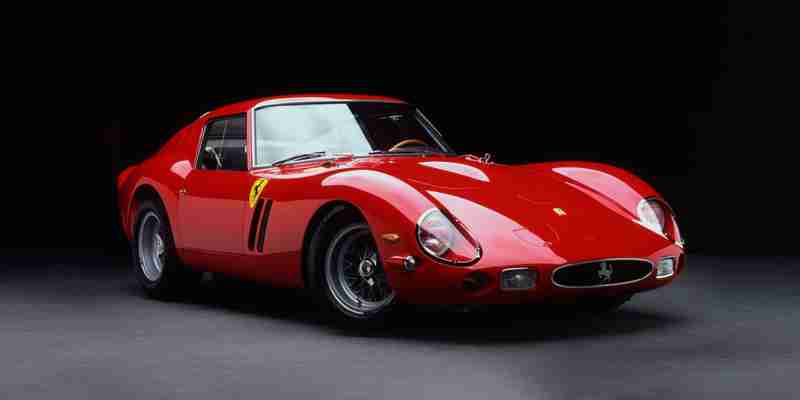
As any fan of vintage cars will tell you, there’s nothing quite like the purr of the engine or the smell of the leather when you’re lucky enough to get up close and personal with one of your favorite antique cars. And that feeling when you spot a perfectly restored, rarely-seen model? Unbeatable.
A history lesson in a vehicle, these cool vintage cars tell a story before you’ve even sat down on the faded leather or ran your finger approvingly across their pristine paintwork.
While part of the fun of these retro cars comes from driving them, the rest of it comes from simple admiration. It doesn’t matter whether you’re an avid car collector or a window shopper with a big interest in the most expensive cars, you can still appreciate these types of older cars and old-fashioned mechanics.
Read on for our round-up of the best classic cars—including the most beautiful vintage car, the most affordable classic car, and the most reliable classic car. Because, of course, that incredible antique car might not seem quite so incredible if it breaks down in the middle of the road.
The 21 best classic cars of all time
Aston Martin DB5 1964
The Aston Martin DB5 was designed to be a talking point and that’s something that’s never really changed. Not only is this one of the most impressive classic cars, it’s also one of the rarest and the most iconic.
Name dropped in the James Bond franchise as well as elsewhere in popular culture, its sky-high price has grown an estimated 790 times since it first arrived on the market. Conceptualized by the Italian designer Carrozzeria Touring Superleggera in Milan, this cool old car was always designed to make an entrance. The more time passes, the bigger the entrance promises to be.
Brand: Aston Martin Model: DB5 First release year: 1964 Current sale value: $990,000
Ferrari 250 GTO 1962
The sleek, stylish Ferrari 250 GTO is one of the most famous classic cars of all time and for a very good reason. This one-of-a-kind model sits worlds apart from the rest, both in its modernized design and expensive price tag (just like the world’s most expensive cars).
When it first appeared, this car didn’t even have a name. Before it was christened officially, it was known internally as “Il Mostro”—the monster—because of its strange design. From its launch in the 1960s through to modern times, it’s a car that’s pushed forward full throttle, with a current value that even most millionaires wouldn’t be able to justify. Discover the history behind Ferrari to learn more about the brand and the incredible cars that followed in the 250 GTO footsteps.
Brand: Ferrari Model: 250 GTO First release year: 1962 Current sale value: Upwards of $48 million
Jaguar E-Type 1961
No self-respecting list of classic cars could start without mentioning the Jaguar E-Type. This iconic car has a history of its own that would still break some records nowadays, with impressive top speeds of 150 mph and a sleek design to match.
Enzo Ferrari described the Jaguar as the most beautiful car in the world and we’d be hard-pressed to disagree. Many of Jaguar’s future designs were inspired by the E-Type, from the body shape to the internal mechanisms and everything in between. It’s a classic car with a legacy that’s lived on arguably further than any other Jaguar in existence.
Brand: Jaguar Model: E-Type First release year: 1961 Current sale value: $125,000
Porsche 911 1963
The Porsche 911 is described as a nearly perfect classic sports car—because there’s always room for a little bit of improvement. A long-time staple of the classic car community, this universally loved vehicle takes plenty of prizes when it comes to impressive statistics.
The design of this luxury supercar actually stemmed from the Volkswagen Beetle, as both were designed by the same person: Ferdinand Porsche. And, even nowadays, the 911 continues to take the record of being the most popular classic sports car in the world. All of those cars have all been produced in the same factory, in Stuttgart, Germany.
Brand: Porsche Model: 911 First release year: 1963 Current sale value: Starts at $101,000
Chevrolet El Camino SS 1970
Think of old-time American movies and you’ll probably find a vague image of a 1970 Chevrolet El Camino SS springs to mind. This American classic was a national and international icon even before the years passed and it turned into a classic car rather than an everyday vehicle.
Released as the high-performance version of the standard El Camino, this American coupe was famed for its surprisingly powerful engines and unique design. After the success of the first release, the Chevrolet El Camino SS was re-released in various new generations, all with slightly more power but the same bespoke body.
Brand: Chevrolet Model: El Camino SS First release year: 1970 Current sale value: $33,000
Oldsmobile Starfire Convertible 1962
The 1962 Oldsmobile Starfire Convertible was the pride and joy of General Motors when it was first released in 1960. It quickly rose to fame as one of the brand’s best-selling models, with its ubiquitous open top and sleek and stylish design.
Its unique trim and luxurious interiors also helped to set it apart from many other General Motors vehicles—something which any proud owner would show off about at the time. Production ceased in 1980, paving the way for new designs to take on the market. But show any self-respecting car fanatic the Oldsmobile Starfire Convertible and they’ll still be as impressed as people were in the ’60s.
Brand: Oldsmobile Model: Starfire Convertible First release year: 1962 Current sale value: $26,400
British Motor Corporation Mini 1959
There’s no classic car quite like the classic Mini. Modernized time and time again with new colors and features, this is the classic car you’re most likely to still see in action in the 21st century. Shortly after its initial release, the Mini quickly became one of the most popular classic cars of all time.
Originally, it was known by the name “Austin Seven and Morris Mini-Minor.” Luckily the far more palatable name “Mini” caught on after its two creators merged. And, while new Minis fight for speed and attention, the original Mini was considered too fast, with an engine that was reduced to 850cc, taking 26.5 seconds to reach 60mph.
Brand: British Motor Corporation Model: Mini First release year: 1959 Current sale value: $31,000
Ford Mustang Shelby GT350 1965
The Shelby Mustang was designed to look good and to drive fast. It wasn’t specially designed for comfort, and it definitely wasn’t designed for family days out. But at least it excelled in the area it originally chose. This stylish, high-performance classic car came in plenty of different variations, with edits made over the years to encourage faster speeds (well, just not quite like the fastest cars in the world), cooler designs, and everything in-between.
Its name came from its collaboration between well-known and loved Ford Motor Company and Shelby American, the high-performance vehicle manufacturer founded by former race car driver Carroll Shelby. You’ll spot a cobra symbol on many of these vehicles: a nickname it was given early in its time.
Brand: Ford Model: Mustang Shelby GT350 First release year: 1965 Current sale value: $575,000
Mercedes 300SL Gullwing 1954
Mention the Mercedes 300SL Gullwing 1954 and you’ll undoubtedly see ears prick up, especially if you’re in a circle of classic car fans. One of the most stylish and iconic classic cars in the world, the Gullwing firmly cemented its place as a premium offering as soon as it launched.
Capable of reaching a top speed of up to 163 mph, it was the fastest production car in the world at the time. The “SL” in its name translates in German to super-leicht, or “super light”. That racing-ready body was designed to be as light as possible to hit top speeds.
Brand: Mercedes-Benz Model: 300SL Gullwing First release year: 1954 Current sale value: $1.9 million
Chevrolet Corvette 1963
The Chevrolet Corvette 1963 was a rare car even when it was first released, which means sourcing a journey in one of these nowadays—let alone even trying to buy one—is an adventure in itself. This famous American muscle car was known best for its “split-window coupe”, offering a unique perspective both from the inside and the outside.
It was considered to be one of the most powerful cars of its time, with strong engines and buttery soft leather on the inside. A time capsule back into the 1960s, it’s worth the hunt if you can source access to one of these cars, even just for a quick glimpse.
Brand: Chevrolet Model: Corvette First release year: 1963 Current sale value: $80,000
Bugatti Type 57 Atlantic 1938
Thought an older Bugatti might be more budget-friendly than a recent model? Think again. You need no better proof that the 1938 Bugatti Type 57 Atlantic will ever go out of fashion than by the knowledge that Ralph Lauren owns the very last one to ever be produced. First created as an entirely new design by Jean Bugatti, there were only ever 710 of these models produced.
Known equally as a style icon as well as known for being one of the world’s most valuable cars, the Bugatti Type 57 Atlantic is still around and functioning today, more than 80 years after it first came to life.
Brand: Bugatti Model: Type 57 Atlantic First release year: 1938 Current sale value: Up to $1.4 million
Rolls-Royce Dawn Drophead 1949
The 1949 Rolls-Royce Dawn Drophead was originally sold after the war, in an effort to redefine luxury and bring back the heightened levels of comfort from before. While it quickly rose to popularity, it was noted for a few peculiar features including a lack of seatbelts and an engine that doesn’t actually fire.
Then there were the buttons, which had subtle markings that made the first few drives something of a make-your-own-adventure challenge. These cars could be customized from conception and were initially brought out as affordable luxury vehicles. The most famous color was the Silver Dawn variant, of which 760 were produced.
Brand: Rolls-Royce Model: Dawn Drophead First release year: 1949 Current sale value: $400,000
Ford Thunderbird 1971
The 1971 Ford Thunderbird is one of those classic cars that come with endless conversation and bursts of nostalgia. It’s an old car you can’t help but smile at as soon as its outsized body and unique charm find their way into the topic of conversation.
A car that underwent multiple personality changes throughout the main period of its life, the Thunderbird drew together all of the classic Ford features and combined them with something a little more luxurious. In General Motors’ opinion, the bigger the better was the way forward when it came to cars. Known for consistently outselling the Buick Riviera, Oldsmobile Toronado, and Cadillac Eldorado, it firmly kept itself in the limelight for years.
Brand: Ford Model: Thunderbird First release year: 1971 Current sale value: $50,000
Jaguar XJS 1989
An unbreakable passion for adventure: that’s what you’ll be reminded of as soon as you’ve made yourself comfortable behind the wheel of a 1989 Jaguar XJS. A classic car made for fun days out and spontaneous decisions, this car is one that kept itself remarkably together and refused to ever break down.
When it first came out, the XJS was pitied for its trailing rear buttresses but, as time has passed, that overall opinion has taken a complete 180. While it’s still one you’ll be able to find nowadays, that wasn’t always the case: the XJS was almost pulled from the overall Jaguar lineup at the start of its life.
Brand: Jaguar Model: XJS First release year: 1989 Current sale value: $20,000
Dodge Viper 1991
The Dodge Viper takes things a little further than your standard classic car in pretty much every way—from speed to sleek design, to almost all other capabilities. This new classic car comes with a love/hate relationship, with some adoring it for its tenacity and others dismissing it as a loose cannon.
A brilliant example that falls somewhere in the middle comes from its initial conception, which took Chrysler CEO Lee Lacocca a mere 30 minutes to sign off. That’s compared to the long, lengthy process it’s taken to sign off virtually every other car in the world.
Brand: Dodge Model: Viper First release year: 1991 Current sale value: $60,000
BMW CSL 1972
Take a quick look at the BMW 3.0 CSL and you might be reminded of another famous vehicle: the Batmobile. Designed to be just as happy driving on racetrack or road, this beast of a car came in limited numbers and only 1,265 have ever been produced.
Lighter than not only its BMW siblings but also many other cars of a similar nature, the CSL had all the characteristics to promise one incredible drive. It’s one that’s taken the crown plenty of times, winning three rounds of the 1976 World Championship for Makes and competing against the likes of the Porsche 911 and Ford Capri.
Brand: BMW Model: CSL First release year: 1972 Current sale value: $216,000
De Tomaso Pantera 1970
The DeTomaso Pantera fused together two of the best parts of the car industry: that sleek, ubiquitous Italian design and the sturdy, unbreakable mechanics from the United States. Marry the two, and you’ll find yourself with a Pantera, or “Panther”.
The Pantera was designed by the Italian design firm Carrozzeria Ghia’s American-born designer Tom Tjaarda and quickly became one of the coolest mass-produced cars of its time. Its 20-year production run ensured plenty of Panteras on the streets after its first reveal at the 1970 New York Motor Show. Ford requested to buy the rights to the vehicle, which ensured an even greater production run than before.
Brand: De Tomaso Automobili Model: Pantera First release year: 1970 Current sale value: $125,000
Lamborghini Miura 1966
Sure, the Lamborghini Miura might look a little different to today’s interpretation but, for its time, this beautiful classic car was truly ahead of the game. Often regarded as the world’s first supercar, thanks to its advanced designs and powerful performance, the Miura has kept its legendary status long after production ran dry.
Its name comes from that of a particularly ferocious Spanish fighting bull, thought to represent the car’s tenacity and speed. This cool old car is one that’s had more than a few adjustments over the years, all released in a range of vibrant and personality-filled colors.
Brand: Lamborghini Model: Miura First release year: 1966 Current sale value: Upwards of $2 million
Land Rover 1948
You’ll see plenty of Land Rovers on the roads nowadays but none are quite as attention-grabbing as the original Land Rover 1948. This British-made all-terrain vehicle is now known as the Series 1, although the design hasn’t changed drastically over the years. With its boxy, utilitarian design, the Land Rover was originally the brainchild of brothers Maurice and Spencer Wilks, who took inspiration from the WW2 Willys Jeep.
As steel was in short supply during its conception, the body of the Land Rover was crafted from aluminum. A few things have changed over time, including the steering wheel, which initially sat in the middle.
If you prefer a contemporary alternative, check our round-up of the best luxury SUVs of the year.
Brand: Jaguar Land Rover Model: Land Rover First release year: 1948 Current sale value: $169,000
Volkswagen Beetle 1938
Volkswagen’s most iconic car is definitely the Beetle, first designed in 1925 by a Hungarian student and applauded for its lightweight design. While most competing cars at the time were known for being heavy and difficult to drive, the Beetle was lightweight and free, a joy to drive for anyone who sat behind the wheel.
It’s also one of the few classic cars with an original design still in production. If you head to Mexico, you’ll still see plenty of original Volkswagen Beetles driven around in almost perfect condition. As well as the millions of them across the rest of the world, of course.
Brand: Volkswagen Model: Beetle First release year: 1938C Current sale value: $18,000
Ford Model T 1908
The Ford Model T 1908 is such a classic car, it not only has its own car-focused history pages but also rightfully owns a place in more generalized history features. Sold by the Ford Motor Company from 1908 to 1927, the Ford Model T was the first car available to the public to buy, in the famous “any color as long as it’s black” model.
Known as the first affordable car, it quickly became an American household staple, with an original selling price of $850. As well as being known for its low price, it was also a regular topic of conversation for its unusual publicity stunts.
Brand: Ford Model: Model T First release year: 1908 Current sale value: $21,000
Frequently asked questions about the best classic cars


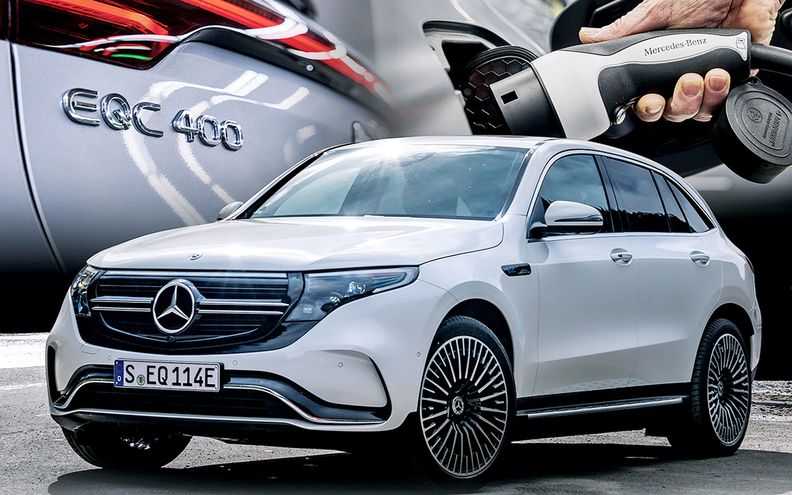

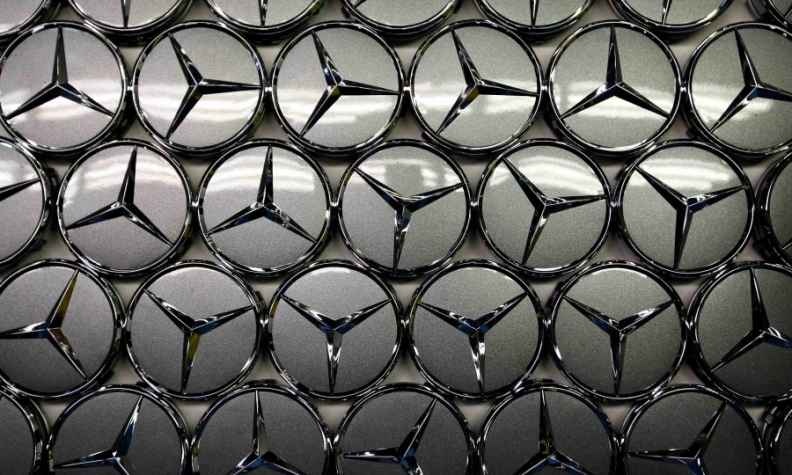
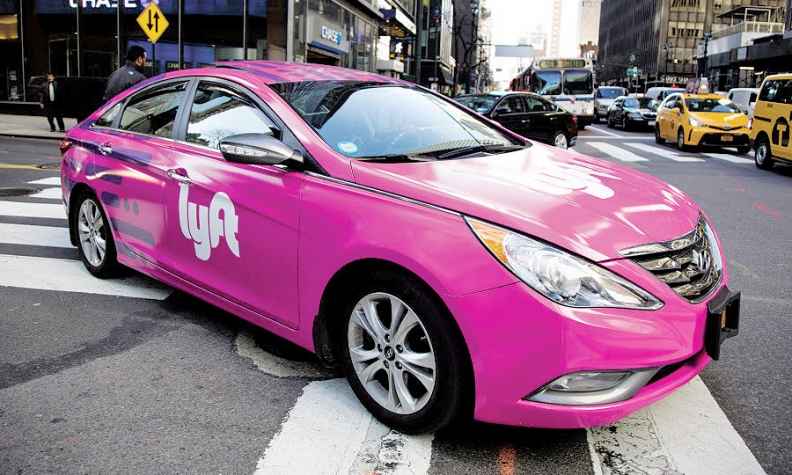
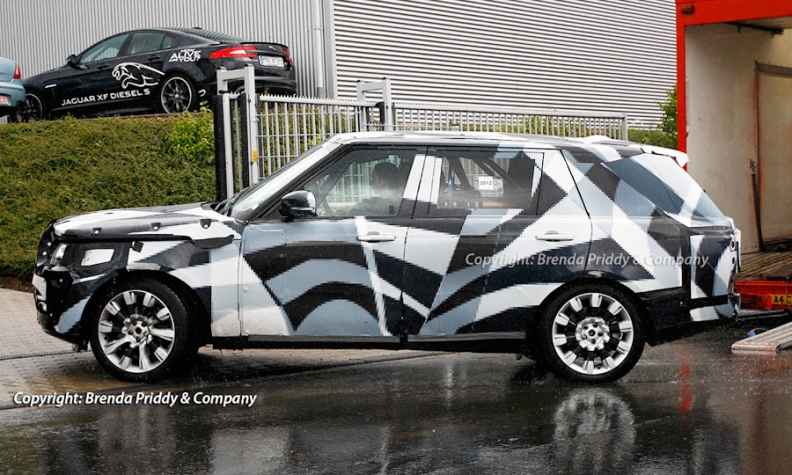
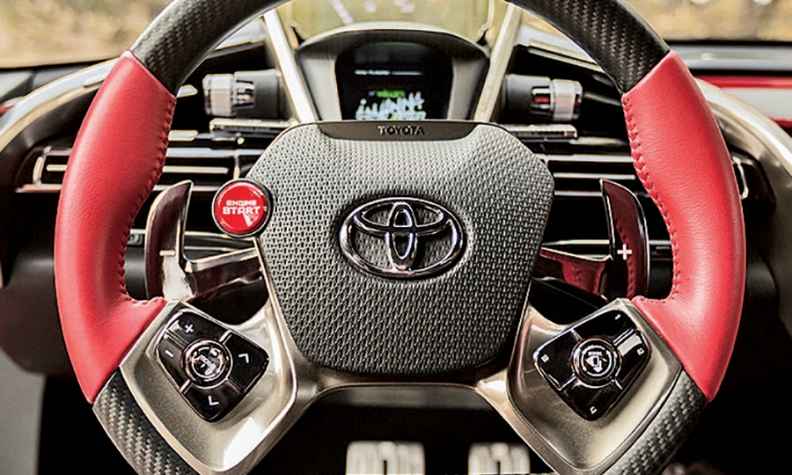
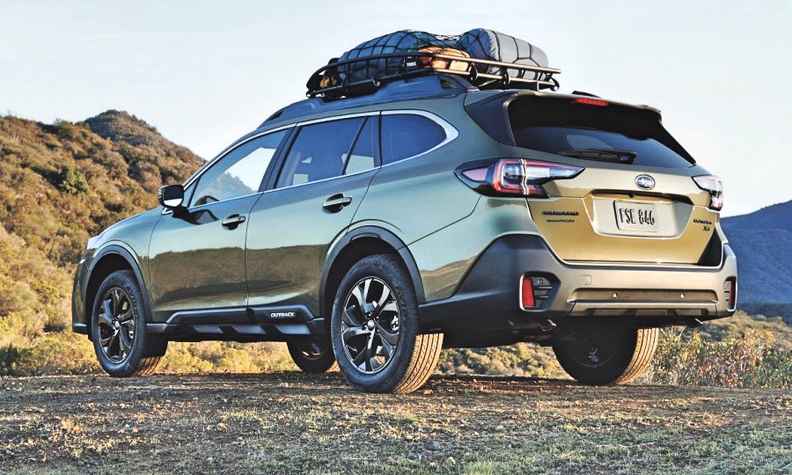
Post your comment